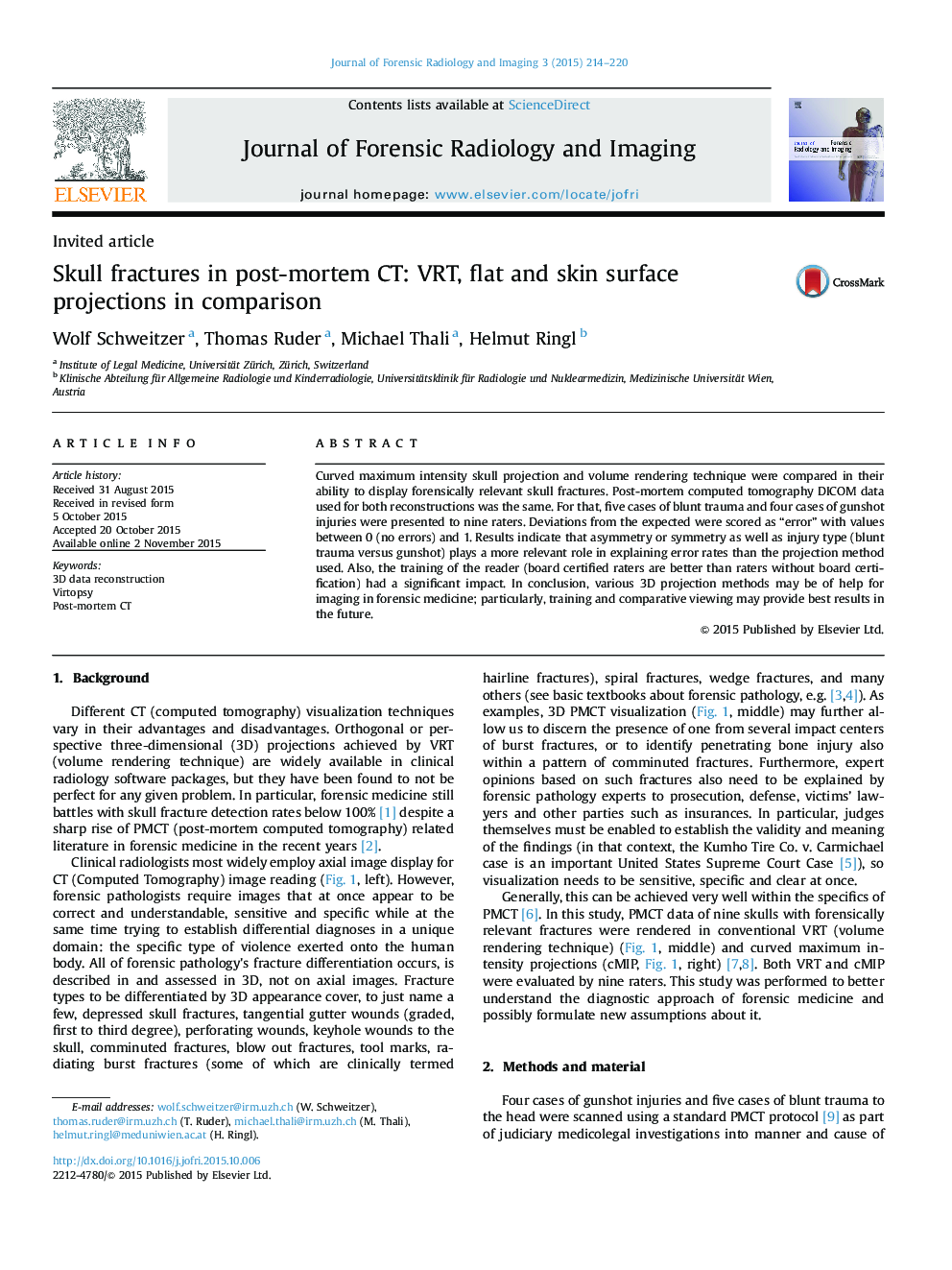| Article ID | Journal | Published Year | Pages | File Type |
|---|---|---|---|---|
| 103275 | Journal of Forensic Radiology and Imaging | 2015 | 7 Pages |
•Usage of PMCT 3D skull reconstructions in forensics is not same as clinical.•Nice visualizations.
Curved maximum intensity skull projection and volume rendering technique were compared in their ability to display forensically relevant skull fractures. Post-mortem computed tomography DICOM data used for both reconstructions was the same. For that, five cases of blunt trauma and four cases of gunshot injuries were presented to nine raters. Deviations from the expected were scored as “error” with values between 0 (no errors) and 1. Results indicate that asymmetry or symmetry as well as injury type (blunt trauma versus gunshot) plays a more relevant role in explaining error rates than the projection method used. Also, the training of the reader (board certified raters are better than raters without board certification) had a significant impact. In conclusion, various 3D projection methods may be of help for imaging in forensic medicine; particularly, training and comparative viewing may provide best results in the future.
